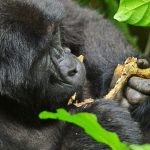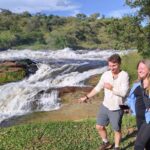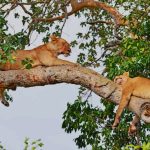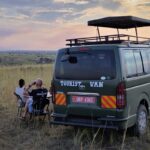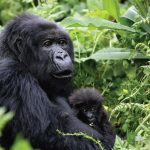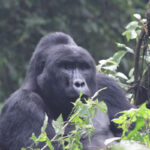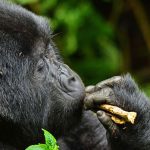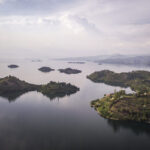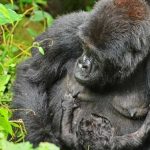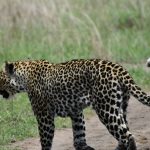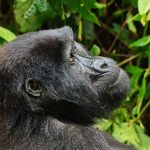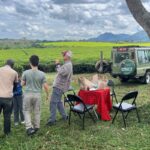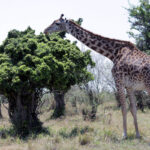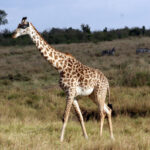What is the Age Limit for Chimpanzee Tracking in Rwanda?
Chimpanzee tracking in Rwanda is one of the most exciting wildlife experiences available in Africa. Nyungwe National Park, with its lush rainforests and diverse primate population, provides the ideal backdrop for observing these intelligent and fascinating creatures in their natural habitat. For wildlife enthusiasts seeking to participate in this adventure, it’s important to understand the age limit for chimpanzee tracking in Rwanda. This article explores the age requirements, what factors influence these limits, and how they compare to other primate-tracking activities, like gorilla trekking. Whether you’re planning your first safari or returning for another adventure, understanding the age limits ensures a safe and enjoyable experience for all involved.
Overview of Chimpanzee Tracking in Rwanda
Rwanda is renowned for its gorilla trekking experiences, especially in Volcanoes National Park, where visitors can observe the mountain gorillas up close. However, the country also offers another incredible opportunity: tracking chimpanzees in Nyungwe National Park. This park, located in the southwestern region of Rwanda, is one of the most biologically rich rainforests in Africa, hosting a variety of primates, including a thriving population of chimpanzees.
Chimpanzee tracking involves venturing into the forest with expert guides and trackers who help locate the chimpanzee groups, known as “troops,” which can be scattered across large areas of the park. Once found, trekkers can observe the chimpanzees’ behavior, including their interactions, feeding, and socializing activities. The experience is educational, thrilling, and deeply immersive, offering travelers an up-close view of these fascinating primates.

Age Limit for Chimpanzee Tracking in Rwanda
For the safety of both the trekkers and the chimpanzees, there are specific age regulations that govern who can participate in chimpanzee tracking in Rwanda. The general age limit for chimpanzee tracking is:
- Minimum Age: 15 years old
- Maximum Age: While there is no official maximum age limit, individuals who are 65 years or older may face more strict requirements, particularly if they have mobility issues or medical conditions that could make trekking in rugged terrain difficult.
This age limit ensures that trekkers are physically and mentally prepared for the challenges of the forest. Chimpanzee tracking involves hiking through dense forests with uneven, muddy, and sometimes steep terrain, so a certain level of fitness and stamina is required.
Minimum Age Requirement: Why 15?
The minimum age of 15 years for chimpanzee tracking in Rwanda is set for several important reasons:
- Physical Endurance: Tracking chimpanzees involves walking for several hours through a dense and sometimes challenging forest environment. Children under 15 may not have the necessary stamina or physical strength to handle the trek, especially considering the uneven and slippery paths that can make the hike strenuous.
- Safety Concerns: The primary focus during chimpanzee tracking is safety. The trek can be unpredictable, with occasional encounters with other wildlife, including other primates and potentially dangerous animals. Children, especially those who are younger, may not have the maturity or awareness to stay calm and follow instructions during such encounters. For this reason, a minimum age of 15 ensures that trekkers have the maturity and understanding to handle the experience safely.
- Forest Navigation: The dense forest environment requires trekkers to follow narrow trails, sometimes climb over fallen logs, and cross muddy areas. Younger children might find it difficult to navigate these terrains effectively. Having a minimum age of 15 ensures that trekkers are physically capable of safely navigating the forest.
- Respect for Wildlife: One of the most important aspects of chimpanzee tracking is ensuring that the chimpanzees are not disturbed or stressed by human presence. Older children (15 years and older) are better able to understand the importance of maintaining a respectful distance from the chimpanzees and behaving quietly and calmly, which is crucial for the safety of both the primates and the trekkers.
What About Older Adults? The Maximum Age Limit
While there is no official upper age limit for chimpanzee tracking in Rwanda, older adults may face stricter health and fitness requirements. It’s essential for those aged 65 and above to carefully evaluate their physical fitness and ability to manage the trek.
Health Considerations
As with any physically demanding activity, those who are older and may have pre-existing health conditions (such as heart disease, joint problems, or mobility impairments) should consult with their doctor before attempting chimpanzee tracking. The trek can involve climbing steep paths, navigating slippery or muddy trails, and walking for several hours in a humid forest environment, which may be more challenging for those with reduced mobility.
For older trekkers, it’s recommended to take the following precautions:
- Pre-Trek Health Check: Older individuals should undergo a thorough health check-up to ensure they are fit for the trek, particularly if they have existing medical conditions.
- Physical Preparation: It’s important to engage in light physical exercises before the trek to prepare the body for the demands of the hike. This includes walking, cardio exercises, and strength training to improve endurance and balance.
- Consultation with the Tour Operator: Tour operators may provide additional advice regarding the level of fitness required for the trek. Some may require older trekkers to sign a waiver or provide a medical certificate.
- Hiring a Porter: For those who may need extra assistance, hiring a porter can provide additional support. Porters can help carry bags, offer a steady hand on difficult paths, and provide reassurance during the trek.
For those who are over 65 but still in good physical condition, the experience can be just as enriching and thrilling as it is for younger trekkers, as long as they are well-prepared.
Comparison to Gorilla Trekking: Age Limits and Differences
Chimpanzee tracking in Rwanda shares many similarities with gorilla trekking, which takes place in Volcanoes National Park. However, the age limits for these two activities differ slightly.
Gorilla Trekking Age Limits
For gorilla trekking in Rwanda, the age limit is:
- Minimum Age: 15 years old
- Maximum Age: Similarly, there is no official maximum age limit for gorilla trekking, but individuals over 65 years of age may face more stringent requirements, especially for those who have mobility or health issues.
The reasoning behind the age limit for gorilla trekking is much like that of chimpanzee tracking. The trek to see the gorillas involves hiking through steep, mountainous terrain, often at high altitudes, which can be physically taxing. Therefore, individuals who are too young or those who have difficulty with strenuous physical activity may not be allowed to participate.
Similarities and Differences
Both activities require a reasonable level of physical fitness, but the terrain for gorilla trekking is often steeper and higher in altitude than the forested hills of Nyungwe National Park. Chimpanzee tracking, on the other hand, can involve more unpredictable terrain, as chimpanzees tend to move around more, sometimes leading trekkers on longer, more arduous journeys through the forest.
The key difference lies in the environment: gorilla trekking is more often conducted at higher altitudes, while chimpanzee tracking takes place in humid and dense rainforests. Both activities demand that trekkers follow strict guidelines for their safety and the well-being of the animals.

Tips for Preparing for Chimpanzee Tracking
Regardless of your age, preparing for chimpanzee tracking ensures that you have a safe and enjoyable experience. Here are a few essential tips:
- Physical Preparation: Engage in light cardio, walking, or hiking in the weeks leading up to your trek to ensure that you are physically ready for the challenge.
- Pack Proper Gear: Bring sturdy hiking boots with good grip, waterproof clothing, a hat, sunscreen, and insect repellent.
- Stay Hydrated: The tropical environment can be hot and humid, so ensure you carry enough water and snacks to stay hydrated and energized during the trek.
- Respect the Wildlife: Maintain silence during your trek and observe the chimpanzees from a safe distance to ensure a respectful and safe experience for both you and the primates.
Conclusion: An Experience for All Ages (With Some Restrictions)
Chimpanzee tracking in Rwanda is an exceptional and transformative experience that allows you to immerse yourself in nature and witness the beauty of one of Africa’s most intelligent primates. While the age limit for chimpanzee tracking is generally set at 15 years old and above, older adults who are in good physical health can still enjoy this adventure by properly preparing and understanding their physical limits.
By ensuring that you meet the age and fitness requirements, you can enjoy a safe and fulfilling chimpanzee trekking experience in the heart of Rwanda’s pristine rainforests. Whether you’re embarking on this adventure as a young traveler or an older explorer, the opportunity to witness chimpanzees in the wild is a once-in-a-lifetime experience that will leave you with lasting memories of Rwanda’s incredible wildlife.

